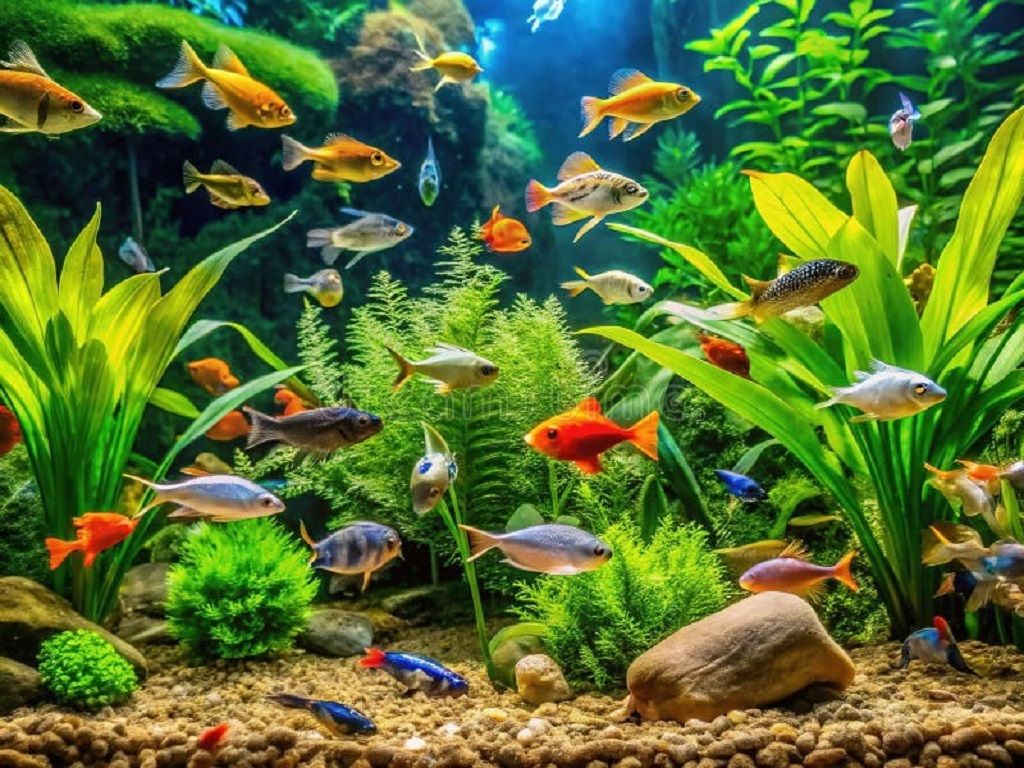
Breeding Tips for Popular Aquarium Fish Species: Expert Advice for Every Hobbyist
Breeding popular aquarium fish species offers an exciting challenge for hobbyists, whether novice or experienced. Understanding the unique requirements of each species can drastically increase success rates and ensure healthy fry. This guide covers practical, proven breeding tips for various popular aquarium fish, combining expert opinions, scientific insights, and real-world experience.
Understanding the Basics of Fish Breeding

Before diving into species-specific tips, it’s essential to grasp the fundamentals. Successful breeding depends on creating an environment that mimics natural conditions closely. Temperature, water quality, diet, and tank setup all influence breeding readiness and fry survival.
For instance, Bettas often require warmer water and low current to breed effectively. According to the Betta Breeders Association, maintaining temperatures between 78-82°F can increase spawning chances by 60%. Meanwhile, livebearers like Guppies thrive with stable pH and soft water, as noted by aquarist experts.
Breeding Tips for Popular Species
-
Guppies (Poecilia reticulata)
Guppies rank among the easiest fish to breed, making them favorites for beginners. They are livebearers, meaning females give birth to fully formed fry rather than laying eggs. However, success hinges on proper conditions:
- Water conditions: Guppies prefer a pH of 7.0-7.2 and temperatures around 75-82°F. Stable parameters reduce stress, which can otherwise delay breeding.
- Diet: A protein-rich diet with live or frozen brine shrimp encourages female fertility and healthy fry.
- Tank setup: Provide dense plants or breeding grass for fry to hide. Otherwise, adults may prey on young.
- Separation: Separating pregnant females before birth boosts survival rates significantly, as shown by studies from the Freshwater Aquarium Society.
-
Angelfish (Pterophyllum scalare)
Angelfish exhibit interesting parental behavior, often guarding their eggs. However, the breeding environment must be right to stimulate spawning:
- Water parameters: Slightly acidic to neutral pH (6.8-7.0) and temperatures between 78-84°F are ideal.
- Pair bonding: Angelfish form monogamous pairs, so allowing natural mate selection enhances success. Avoid pairing fish forcibly.
- Spawning site: Flat vertical surfaces like broad leaves or slate work well. The parents lay eggs on these and fiercely protect them.
- Post-spawning care: Keep tank calm and free of potential predators, including other fish, to prevent egg predation.
-
Corydoras Catfish
Corydoras, popular bottom dwellers, breed readily under optimal conditions. They are egg layers that scatter adhesive eggs on plants or tank décor:
- Water changes: Frequent, large water changes mimic rainy season triggers that stimulate spawning.
- Temperature: A drop from 75°F to 72°F can simulate environmental changes, prompting breeding behavior.
- Diet: Feeding live foods such as bloodworms or daphnia enhances readiness.
- Egg protection: Since Corydoras do not guard their eggs, removing adults post-spawning is advised to protect eggs from consumption.
-
Neon Tetras (Paracheirodon innesi)
Neon Tetras demand more delicate conditions for successful breeding, making them a moderate challenge:
- Lighting: Dim lighting and subdued environments encourage spawning, reflecting their natural shaded habitats.
- Water: Soft, acidic water (pH 5.5-6.0) with temperatures around 75-80°F supports egg fertilization and development.
- Spawning behavior: Males court females with a shimmering display, and eggs are laid on fine-leafed plants.
- Fry care: Neon Tetra eggs are sensitive to fungus; adding methylene blue can prevent fungal infections.
Common Challenges and Solutions
Breeding aquarium fish faces challenges such as stress, water quality fluctuations, and predation of eggs or fry. Experts recommend:
- Quarantine and health checks to prevent disease spread, which can devastate breeding efforts.
- Consistent water parameters to avoid shocking fish; sudden changes often halt spawning.
- Adequate nutrition for both adults and fry to promote growth and vitality.
- Separating fry early to prevent cannibalism and ensure adequate food access.
These steps, supported by research from the Aquatic Breeding Society, reflect the consensus among top breeders worldwide.
Professional Tips for Breeding Success
- Observe behavior: Learning subtle cues like male chasing or nest preparation indicates breeding readiness.
- Maintain genetic diversity: Avoid inbreeding by rotating breeding stock or introducing wild specimens when possible.
- Use breeding traps or nets: For livebearers, this method separates fry immediately, improving survival.
- Document and adjust: Keeping a breeding journal helps track successes and failures, refining techniques over time.
Featured Snippet: How Do You Successfully Breed Popular Aquarium Fish Species?
Breeding popular aquarium fish requires replicating natural conditions. Stable temperature, proper pH, and clean water are crucial. Feed protein-rich foods to boost fertility. Provide hiding places for fry to avoid predation. Observe fish behavior to time breeding. Separate fry from adults to improve survival rates. Each species needs specific conditions; for example, Guppies breed best in slightly alkaline water, while Neon Tetras prefer soft, acidic water. Consistent care and attention increase breeding success dramatically.
Read More Also: Why Is My Phone Charging Backwards? (Causes & Fixes)
Frequently Asked Questions (FAQs)
How often do popular aquarium fish breed?
Many species breed every few weeks if conditions are ideal, especially livebearers like Guppies.
Can I breed different fish species together?
It’s generally not recommended due to different breeding needs and risk of hybridization.
What is the best temperature for breeding tropical fish?
Most tropical species breed well between 75-82°F, though specifics vary by species.
Do all fish eat their own fry?
Not all, but many species do. Providing hiding spots or separating fry is essential.
How long does it take for eggs to hatch?
Egg incubation ranges from 24 hours (Guppies) to 5 days (Angelfish), depending on species.
What should I feed fish fry?
Infusoria, baby brine shrimp, or finely crushed flakes suit most fry diets.
Can I use tap water for breeding tanks?
Tap water needs to be treated and adjusted for pH and hardness to suit specific fish.
Read More Also: Is Starlink Roam Truly Unlimited Data? A Traveler’s Tale
Final Thought
Breeding aquarium fish is both rewarding and educational. It deepens your understanding of aquatic life and sharpens your husbandry skills. By following tailored breeding tips for popular aquarium fish species, you enhance fry survival and enjoy a thriving tank ecosystem. Whether you’re breeding Guppies, Angelfish, or Neon Tetras, attention to detail and patience pave the way to success. The journey from spawning to raising healthy fry challenges every hobbyist but offers unmatched satisfaction.







